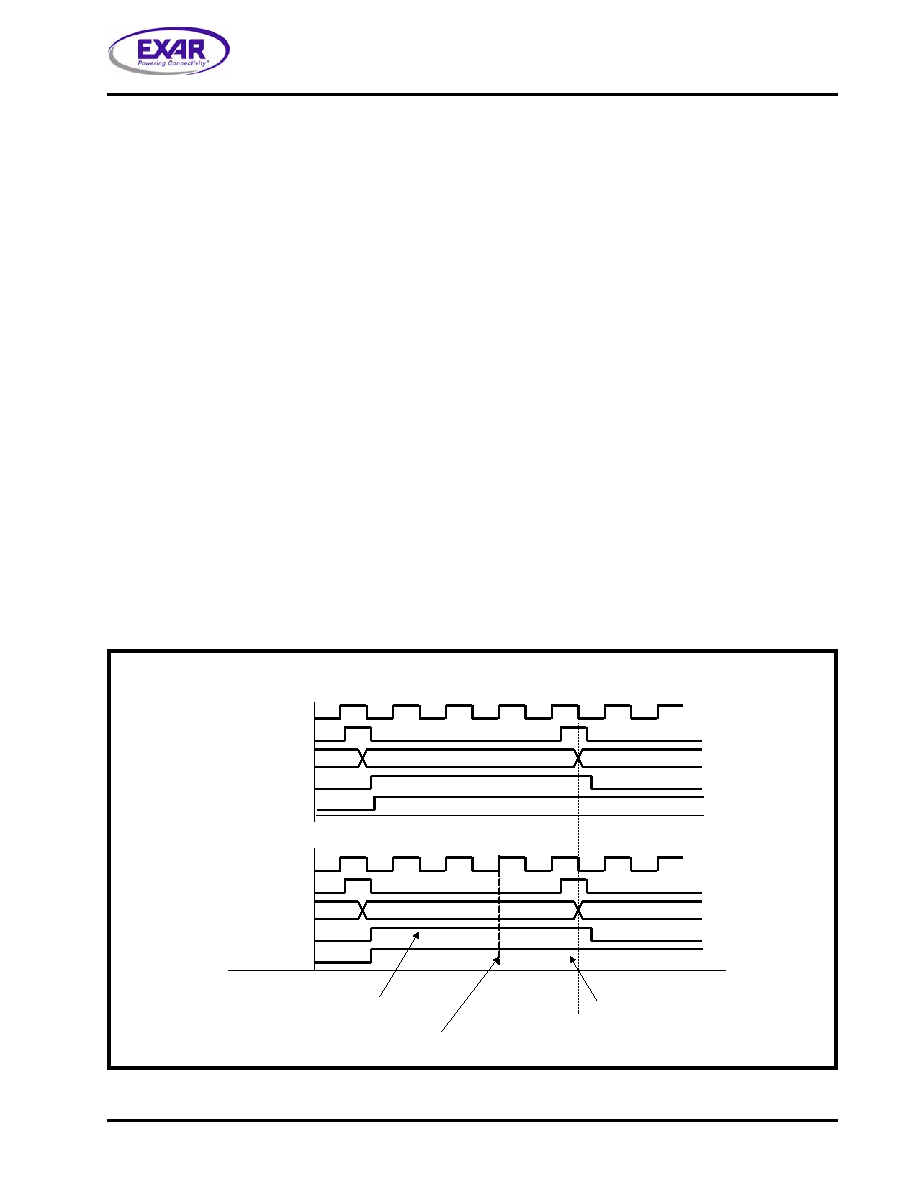- 您現(xiàn)在的位置:買賣IC網(wǎng) > PDF目錄1977 > XRT79L71IB-F (Exar Corporation)IC LIU/FRAMER DS3/E3 1CH 208BGA PDF資料下載
參數(shù)資料
| 型號(hào): | XRT79L71IB-F |
| 廠商: | Exar Corporation |
| 文件頁數(shù): | 409/609頁 |
| 文件大小: | 0K |
| 描述: | IC LIU/FRAMER DS3/E3 1CH 208BGA |
| 標(biāo)準(zhǔn)包裝: | 126 |
| 控制器類型: | DS3/E3 調(diào)幀器 |
| 接口: | LIU |
| 電源電壓: | 3.15 V ~ 3.45 V |
| 工作溫度: | -40°C ~ 85°C |
| 安裝類型: | 表面貼裝 |
| 封裝/外殼: | 208-LBGA |
| 供應(yīng)商設(shè)備封裝: | 208-STBGA(17x17) |
| 包裝: | 托盤 |
第1頁第2頁第3頁第4頁第5頁第6頁第7頁第8頁第9頁第10頁第11頁第12頁第13頁第14頁第15頁第16頁第17頁第18頁第19頁第20頁第21頁第22頁第23頁第24頁第25頁第26頁第27頁第28頁第29頁第30頁第31頁第32頁第33頁第34頁第35頁第36頁第37頁第38頁第39頁第40頁第41頁第42頁第43頁第44頁第45頁第46頁第47頁第48頁第49頁第50頁第51頁第52頁第53頁第54頁第55頁第56頁第57頁第58頁第59頁第60頁第61頁第62頁第63頁第64頁第65頁第66頁第67頁第68頁第69頁第70頁第71頁第72頁第73頁第74頁第75頁第76頁第77頁第78頁第79頁第80頁第81頁第82頁第83頁第84頁第85頁第86頁第87頁第88頁第89頁第90頁第91頁第92頁第93頁第94頁第95頁第96頁第97頁第98頁第99頁第100頁第101頁第102頁第103頁第104頁第105頁第106頁第107頁第108頁第109頁第110頁第111頁第112頁第113頁第114頁第115頁第116頁第117頁第118頁第119頁第120頁第121頁第122頁第123頁第124頁第125頁第126頁第127頁第128頁第129頁第130頁第131頁第132頁第133頁第134頁第135頁第136頁第137頁第138頁第139頁第140頁第141頁第142頁第143頁第144頁第145頁第146頁第147頁第148頁第149頁第150頁第151頁第152頁第153頁第154頁第155頁第156頁第157頁第158頁第159頁第160頁第161頁第162頁第163頁第164頁第165頁第166頁第167頁第168頁第169頁第170頁第171頁第172頁第173頁第174頁第175頁第176頁第177頁第178頁第179頁第180頁第181頁第182頁第183頁第184頁第185頁第186頁第187頁第188頁第189頁第190頁第191頁第192頁第193頁第194頁第195頁第196頁第197頁第198頁第199頁第200頁第201頁第202頁第203頁第204頁第205頁第206頁第207頁第208頁第209頁第210頁第211頁第212頁第213頁第214頁第215頁第216頁第217頁第218頁第219頁第220頁第221頁第222頁第223頁第224頁第225頁第226頁第227頁第228頁第229頁第230頁第231頁第232頁第233頁第234頁第235頁第236頁第237頁第238頁第239頁第240頁第241頁第242頁第243頁第244頁第245頁第246頁第247頁第248頁第249頁第250頁第251頁第252頁第253頁第254頁第255頁第256頁第257頁第258頁第259頁第260頁第261頁第262頁第263頁第264頁第265頁第266頁第267頁第268頁第269頁第270頁第271頁第272頁第273頁第274頁第275頁第276頁第277頁第278頁第279頁第280頁第281頁第282頁第283頁第284頁第285頁第286頁第287頁第288頁第289頁第290頁第291頁第292頁第293頁第294頁第295頁第296頁第297頁第298頁第299頁第300頁第301頁第302頁第303頁第304頁第305頁第306頁第307頁第308頁第309頁第310頁第311頁第312頁第313頁第314頁第315頁第316頁第317頁第318頁第319頁第320頁第321頁第322頁第323頁第324頁第325頁第326頁第327頁第328頁第329頁第330頁第331頁第332頁第333頁第334頁第335頁第336頁第337頁第338頁第339頁第340頁第341頁第342頁第343頁第344頁第345頁第346頁第347頁第348頁第349頁第350頁第351頁第352頁第353頁第354頁第355頁第356頁第357頁第358頁第359頁第360頁第361頁第362頁第363頁第364頁第365頁第366頁第367頁第368頁第369頁第370頁第371頁第372頁第373頁第374頁第375頁第376頁第377頁第378頁第379頁第380頁第381頁第382頁第383頁第384頁第385頁第386頁第387頁第388頁第389頁第390頁第391頁第392頁第393頁第394頁第395頁第396頁第397頁第398頁第399頁第400頁第401頁第402頁第403頁第404頁第405頁第406頁第407頁第408頁當(dāng)前第409頁第410頁第411頁第412頁第413頁第414頁第415頁第416頁第417頁第418頁第419頁第420頁第421頁第422頁第423頁第424頁第425頁第426頁第427頁第428頁第429頁第430頁第431頁第432頁第433頁第434頁第435頁第436頁第437頁第438頁第439頁第440頁第441頁第442頁第443頁第444頁第445頁第446頁第447頁第448頁第449頁第450頁第451頁第452頁第453頁第454頁第455頁第456頁第457頁第458頁第459頁第460頁第461頁第462頁第463頁第464頁第465頁第466頁第467頁第468頁第469頁第470頁第471頁第472頁第473頁第474頁第475頁第476頁第477頁第478頁第479頁第480頁第481頁第482頁第483頁第484頁第485頁第486頁第487頁第488頁第489頁第490頁第491頁第492頁第493頁第494頁第495頁第496頁第497頁第498頁第499頁第500頁第501頁第502頁第503頁第504頁第505頁第506頁第507頁第508頁第509頁第510頁第511頁第512頁第513頁第514頁第515頁第516頁第517頁第518頁第519頁第520頁第521頁第522頁第523頁第524頁第525頁第526頁第527頁第528頁第529頁第530頁第531頁第532頁第533頁第534頁第535頁第536頁第537頁第538頁第539頁第540頁第541頁第542頁第543頁第544頁第545頁第546頁第547頁第548頁第549頁第550頁第551頁第552頁第553頁第554頁第555頁第556頁第557頁第558頁第559頁第560頁第561頁第562頁第563頁第564頁第565頁第566頁第567頁第568頁第569頁第570頁第571頁第572頁第573頁第574頁第575頁第576頁第577頁第578頁第579頁第580頁第581頁第582頁第583頁第584頁第585頁第586頁第587頁第588頁第589頁第590頁第591頁第592頁第593頁第594頁第595頁第596頁第597頁第598頁第599頁第600頁第601頁第602頁第603頁第604頁第605頁第606頁第607頁第608頁第609頁

PRELIMINARY
XRT79L71
452
REV. P2.0.0
1-CHANNEL DS3/E3 CLEAR-CHANNEL FRAMERLIU COMBO - CC/HDLC ARCHITECTURE
The Transmit Payload Data Input Interface block's handling of E3 Overhead Bytes when configured to
operate in the "Nibble-Parallel" Mode
In contrast to the DS3 Framing formats (which are "bit-oriented" framing formats), the E3, ITU-T G.832 framing
format is a "byte-oriented" framing format. As a consequence, there will be cases in which the Transmit
Payload Data Input Interface (within the XRT79L71) will be processing an "E3 overhead nibble", and the
"TxOH_Ind" output pin (in this case) DOES have meaning. In "Mode 6" Operation, the XRT79L71 will pulse its
"TxOH_Ind" output pin "HIGH" one nibble-period prior to the instant that it will process a given "Overhead"
nibble within the outbound E3 frame.
Since the "TxOH_Ind" output pin of the XRT79L71 is electrically
connected to the "E3_Overhead"_Ind" input pin (of the System-Side Terminal Equipment); whenever the
XRT79L91 device pulses its "TxOH_Ind" output pin "HIGH", it will also drive the "E3_Overhead_Ind" input pin
(of the System-Side Terminal Equipment) "HIGH". Whenever the "System-Side Terminal Equipment" detects
this pin toggling "high" it should delay the transmission of the very next E3 payload nibble by one "TxNibClk"
clock period.
NOTE:
Since the E3, ITU-T G.832 Frame consists of overhead bytes (in lieu of overhead nibbles), whenever the
"TxOH_Ind" output pin (of the XRT79L71) pulses "high" it will do so for four (4) consecutive nibble-periods (when
processing the FA1 and FA2 bytes) and it will do so for two (2) consecutive bit-periods, when processing the
remaining five (5) overhead bytes. Therefore, for the E3, ITU-T G.832 framing format, whenever the "System-Side
Terminal Equipment" detects the "TxOH_Ind" output pin being pulled "high", it is expected to (1) continuously
sample the state of the "TxOH_Ind" output pin with each rising edge of "TxNibClk" and (2) to NOT transmit an E3
payload bit (to the Transmit Payload Data Input Interface block) until it samples the "TxOH_Ind" output pin toggling
"low".
The Frequency of TxNibClk for E3, Nibble-Parallel Mode Operation
In contrast to that for the DS3 framing formats, for E3 Applications (both ITU-T G.832 and ITU-T G.751 framing
formats) the frequency of the TxNibClk clock signal is exactly one-fourth of the frequency of the "TxInClk"
signal.
Configuring the XRT79L71 to operate in Mode 6 (Nibble-Parallel/Local-Timing/Frame Master Mode)
FIGURE 217. AN ILLUSTRATION OF THE BEHAVIOR OF THE "SYSTEM-SIDE TERMINAL EQUIPMENT" SIGNALS FOR
MODE 6 (NIBBLE-PARALLEL/LOCAL-TIMING/FRAME MASTER) MODE OPERATION
System-Side Terminal Equipment Signals
TxInClk
Tx_End_of_Frame
E3_Nib_Clock_In
E3_Data_Out[3:0]
Payload Nibble [1059]
FA1 Byte, Nibble [0]
XRT79L71 Transmit Payload Data Input Interface Signals
E3 Frame Number N
E3 Frame Number N + 1
Note: TxNibFrame pulses high to denote
E3 Frame Boundary.
TxInClk
TxNibFrame
TxNibClk
TxNib[3:0]
Payload Nibble [1059]
FA1 Byte, Nibble [0]
Sampling Edge of XRT79L71 Device
E3_OH_Ind
TxOH_Ind
TxOH_Ind toggles to
Denote Overhead Nibble
相關(guān)PDF資料 |
PDF描述 |
|---|---|
| XRT81L27IV-F | IC LIU EI 7CH 3.3V 128TQFP |
| XRT82D20IW-F | IC LIU E1 SGL 28SOJ |
| XRT82L24AIV-F | IC LIU E1 QAUD 100TQFP |
| XRT83D10IW | IC LIU T1/E1 SGL 28SOJ |
| XRT83L30IV-F | IC LIU LH/SH T1/E1 SGL 64TQFP |
相關(guān)代理商/技術(shù)參數(shù) |
參數(shù)描述 |
|---|---|
| XRT79L72 | 制造商:EXAR 制造商全稱:EXAR 功能描述:2 - CHANNEL DS3/E3 ATM UNI/PPP COMBO IC |
| XRT79L72IB | 制造商:EXAR 制造商全稱:EXAR 功能描述:2 - CHANNEL DS3/E3 ATM UNI/PPP COMBO IC |
| XRT79L73 | 制造商:EXAR 制造商全稱:EXAR 功能描述:3 - CHANNEL DS3/E3 ATM UNI/PPP COMBO IC |
| XRT79L73IB | 制造商:EXAR 制造商全稱:EXAR 功能描述:3 - CHANNEL DS3/E3 ATM UNI/PPP COMBO IC |
| XRT79L74 | 制造商:EXAR 制造商全稱:EXAR 功能描述:4 - CHANNEL DS3/E3 ATM UNI/PPP COMBO IC |
發(fā)布緊急采購,3分鐘左右您將得到回復(fù)。